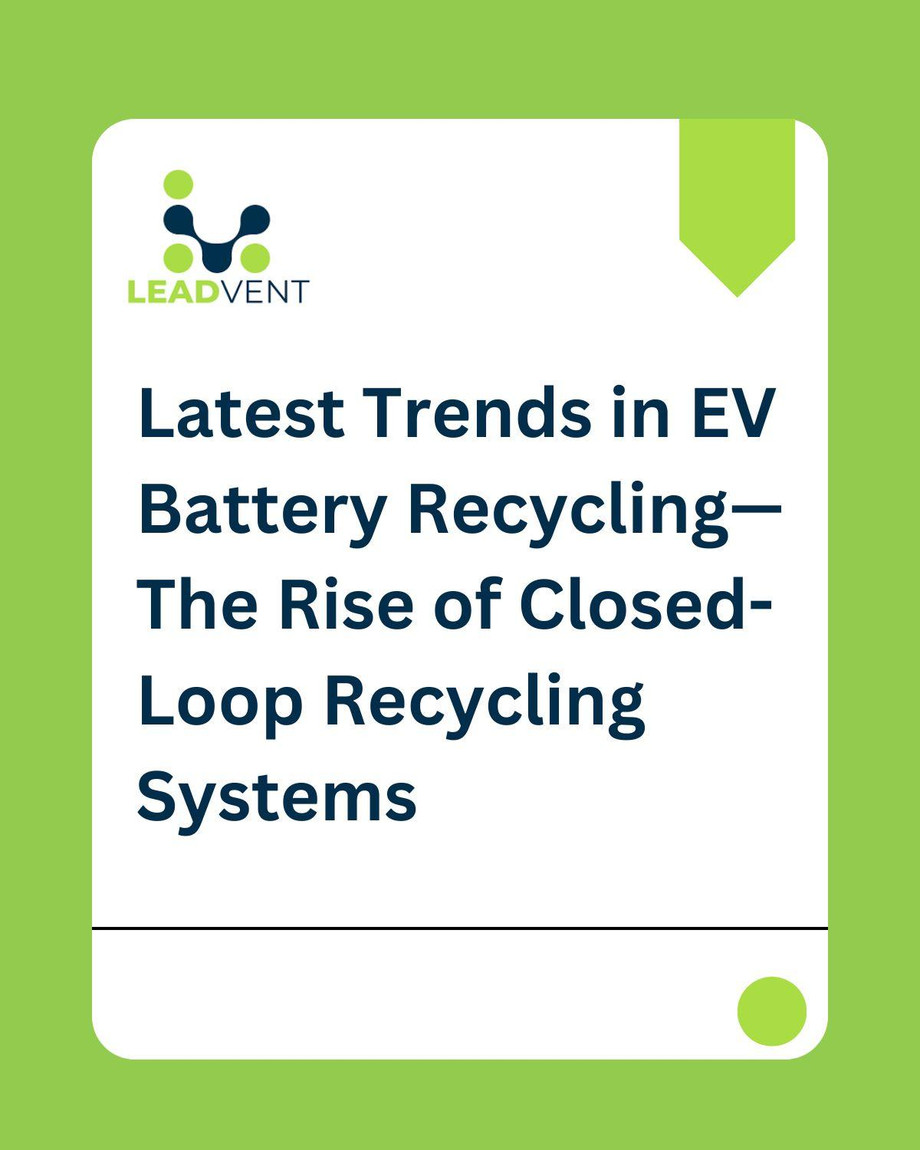Introduction
The electric vehicle (EV) revolution is here, but alongside the accelerated adoption of EVs lies a crucial challenge — battery waste. With millions of EVs predicted to hit the roads, the question becomes, "What happens to all the batteries once they reach the end of their lifecycle?" The rise of EV battery recycling and the adoption of closed-loop systems are revolutionizing sustainability within the battery industry, setting a new standard for innovation and environmental responsibility.
What is Closed-Loop Recycling?
Closed-loop recycling reclaims valuable materials from used products, like EV batteries, for reuse in new production. For EV batteries, it involves recycling key materials like lithium, nickel, and cobalt to make new cells, reducing the need for raw mining.
This supports a circular economy, reduces waste, and lowers environmental impact. It’s a sustainable, cost-effective way to manage resources while meeting the growing demand for EVs.
Benefits of Closed-Loop Recycling Systems
-
Reduced Dependency on Mining
Mining materials like cobalt is resource-intensive and often linked to unethical labor practices. Closed-loop recycling reduces the need for mining by turning waste into a resource.
-
Lower Carbon Footprint
By avoiding long, energy-intensive supply chains, closed-loop systems cut emissions from raw material extraction and processing.
-
Cost Savings
Recovering materials from old batteries lowers costs for OEMs and avoids the volatility of raw material prices.
-
Regulatory Compliance
Regions like the EU are mandating battery recycling regulations with minimum recycled material quotas, giving closed-loop systems a compliance advantage.
Key Innovations Transforming EV Battery Recycling
1. Lithium Recovery Advancements
Lithium, a critical material in most EV batteries, is challenging and expensive to extract. Companies like Redwood Materials and Ascend Elements are pioneering technologies that improve lithium recovery rates. Ascend Elements, for example, employs a "hydrometallurgy" process that extracts lithium without releasing harmful by-products.
2. Nickel and Cobalt Efficiency
Cobalt is vital but controversial due to its sourcing risks. Closed-loop systems by companies such as Li-Cycle have achieved over 95% recovery rates for cobalt and nickel, providing high-quality outputs suitable for new battery production.
3. AI-Driven Sorting and Dismantling
Sorting and dismantling batteries for recycling requires precision. Companies like Green Li-Ion showcased at the EV Battery and Recycling Forum are using AI-powered solutions to improve efficiency and enhance the safety of battery recycling operations.
Real-World Case Studies
Case Study 1: Redwood Materials
Former Tesla CTO JB Straubel founded Redwood Materials, a leader in closed-loop recycling. The company's ability to reclaim over 95% of lithium, cobalt, and other EV battery materials ensures these recovered resources go straight back into new electric batteries without being downgraded.
Case Study 2: Li-Cycle
Li-Cycle embraces a hydrometallurgical approach to recycle critical metals efficiently. Their hub in Rochester, NY, recycles material equivalent to 60,000 EVs annually, underscoring closed-loop systems' scalability.
Stats and Projections for EV Battery Recycling
-
The EV battery recycling market in Europe alone was valued at USD 1.9 billion in 2022 and is projected to grow to USD 10.5 billion by 2032, with a CAGR of 21%.
-
Over 70% of EV batteries reaching the end of life by 2030 could be recycled for high-value materials.
-
A typical recycled battery undergoes multiple reusages in new manufacturing, saving up to 40% in raw material costs.
FAQs About EV Battery Recycling
Why is EV battery recycling so important?
Recycling cuts down on resource scarcity, improves sustainability, and creates a secondary supply chain for critical materials like lithium and cobalt.
What makes closed-loop recycling stand out?
Closed-loop recycling systems prioritize reusing materials in new products without downgrading their quality, promoting circular economy principles and reducing mining dependency.
What are the challenges in recycling EV batteries?
High costs, lack of standardization, and infrastructure scalability remain significant hurdles. However, emerging innovations continue to address these obstacles.
Will closed-loop recycling be widely adopted?
Yes, as regulations tighten and companies strive for sustainability, closed-loop recycling is rapidly becoming a go-to strategy across the EV and battery sectors.
2nd Annual Electric Vehicle Battery and Recycling Forum
To stay at the forefront of EV battery recycling innovations, consider attending the 2nd Annual Electric Vehicle Battery and Recycling Forum, scheduled for February 26-27, 2025, in Amsterdam. This battery recycling conference will provide unparalleled insights from industry leaders, showcase cutting-edge technologies, and discuss how to overcome existing recycling challenges. Don't miss out on this opportunity to gain unparalleled insights, discover cutting-edge technologies, and engage in insightful discussions on overcoming existing recycling challenges. Secure your spot at this exclusive event and be at the forefront of EV battery recycling innovations.

